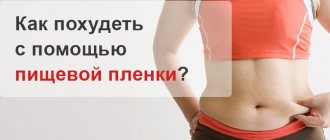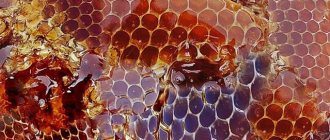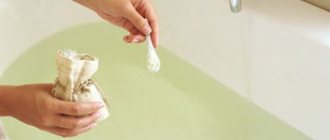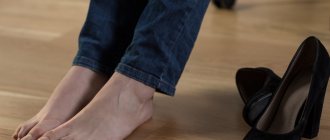- Description of the procedure
- Indications
- Step-by-step instructions for the procedure
- How many procedures will be required and how often can it be done?
- Impact zones
- Effect before and after the procedure
- Pros and cons of ultrasonic cavitation
- Disadvantages of ultrasonic cavitation
- Contraindications
- Preparation for the procedure
- Side effects
- Ultrasonic cavitation and liposuction
- Vacuum Ultrasonic Cavitation
- Ultrasonic cavitation and RF lifting
- Carrying out the procedure at home
Ultrasonic cavitation is called the new non-surgical liposuction. With its help, you can lose weight in problem areas and tighten your body without injections or exhausting physical activity. Noticeable transformations are visible after the first procedure, and the results of completing the course are similar to a month of classes in the fitness room.
However, to maintain the result, it is necessary to rebuild your diet. If you overeat, the split fat will form again.
Description of the procedure
Ultrasonic cavitation is a cosmetic, non-injection procedure for removing unwanted fat in problem areas.
How does ultrasonic cavitation work:
- The device emits low-frequency ultrasound;
- Inside the fat cells (adipocytes), in response to ultrasound, a small bubble is formed, which gradually increases;
- The adipocyte swells, the cell membrane (wall) cannot withstand the tension and ruptures;
- The adipocyte is destroyed, and all the structures that were inside the cell are broken down into breakdown products (triglycerides), enter the lymphatic and blood vessels, then go to the liver and are broken down into glucose - the energy substrate for any cells in the body.
Low-frequency ultrasound waves have a destructive effect only on adipocytes; they do not have such a pronounced effect on other cells (skin, muscles and blood vessels) (without negative consequences) due to the strength and elasticity of these structures.
How is the cavitation effect formed?
The formation of cavitation bubbles and their collapse with the formation of a hydraulic shock - this expresses the effect of cavitation. The mechanisms by which this process occurs may be different, but their essence is the creation of breaks in a continuous flow of liquid, which are filled with gas. After changing the conditions under which the cavities formed, the thin shell of the bubbles ruptures and the energy accumulated in them is released. There are several ways to cause the cavitation effect, and the most common are hydrodynamic and acoustic.
Hydrodynamic
If the pressure in a liquid medium decreases by increasing the high-speed flow of a droplet liquid, then this cavitation effect is called hydrodynamic (“hydro” - liquid, “dynamics” - movement). An example is the heating of a liquid, when very small bubbles, moving with the general flow of liquid, enter an area of low pressure and expand sharply due to an increase in the pressure of the vapor contained in them. Hydrodynamic cavitation is accompanied by a high level of noise, which is created by bursting cavities.
Acoustic
The propagation of ultrasonic waves, even of low intensity, contributes to the emergence of variable sound pressure in liquids, under the influence of which alternating compression and stretching of the liquid occurs. The cavitation effect is formed if a vacuum is created in the liquid (i.e. the pressure above it decreases), which leads to the penetration of steam into the water and the formation of cavitation bubbles.
Low-frequency ultrasonic waves, propagating in a liquid, lead to the formation of cavities (bubbles) filled with gas and steam. After the cessation of the influence of ultrasound on the liquid, a rarefaction phase begins, during which most of the cavities collapse, producing a shock wave. When encountering obstacles on its way, the shock wave impacts their surface, causing minor destruction.
Step-by-step instructions for the procedure
Stages of ultrasonic cavitation:
- Consultation with a cosmetologist. Anamnesis collection, examination, exclusion of contraindications for the procedure. Selecting the treated area.
- Setting up the device. The patient is positioned on the couch in a supine or reclining position. A special gel is applied to the problem area (similar to what is used during ultrasound so that the skin does not rub and the device’s sensor fits tightly to the body).
- Carrying out ultrasonic cavitation. Depending on the area, the procedure lasts from 20 to 40 minutes.
- Completion of the session: the patient wipes the remaining gel from the skin.
To enhance the fat burning effect, it is recommended to undergo additional cosmetic procedures: pressotherapy, lipolytic injection cocktails, lymphatic drainage or massage.
Methods of fighting at home: massage, wraps, scrub, masks, exercises, diets
Women are ready to make any sacrifice to become the queen of the beach and drive men crazy with their smooth legs.
Depending on the financial status and degree of cellulite, different treatment methods are used:
| Stage of development | Description | Treatment |
| First stage | Easily treatable. At the first stage, cellulite is not so noticeable, but when squeezed, orange pits treacherously appear. The thighs diverge noticeably in width, the elasticity of the skin is reduced |
|
| Second stage | Cellulite is visible to the naked eye, the tubercles are deep and dense | Work on yourself in a complex:
|
| Third stage | The orange peel has spread not only to the butt and legs; in some places the skin has lost sensitivity. The flaws stand out very much | Fulfill all conditions:
|
| Fourth stage | Some areas of the skin have atrophied, the shade has changed from natural flesh to bluish. The legs and hips do not look aesthetically pleasing, the mounds are deep, the body becomes shapeless | Contact a specialist. Work on yourself daily with the help of:
|
Important! At the last advanced stage, you can contact a surgeon. To restore the beauty and functions of the circulatory system, surgery cannot be avoided.
It is impossible to get rid of cellulite spots in a week, so don’t expect a miracle right away. But over this period of time it will be possible to significantly reduce the number of skin irregularities.
With the help of simple ingredients you can perform anti-cellulite manipulations at home.
The best methods of struggle according to cosmetologists:
- Massage with anti-cellulite oil and cream. It is rubbing that plays the main role in the fight, and not the product itself. Rubbing the buttocks enhances the penetration of the active substance into the deep layers of the skin. There is no need to invent complicated recipes; use olive or coconut oil for massage.
- Scrubbing. An important preparatory stage of massage. It’s easy to prepare a scrub at home: don’t throw away the coffee grounds, but treat your entire body with it. This method increases blood flow in the organs.
- Natural wraps with clay, red pepper. They help remove excess fluid from the body. After massage procedures, wrap yourself in cling film, wrap yourself in a blanket and enjoy. The duration of this procedure is about an hour.
- Essential aroma baths, water massage with a brush. Forceful stimulation helps to warm up tissues. Take an ethereal bath with 2-3 drops for 15 minutes, rub problem areas of the skin with a special brush. Baths help get rid of toxins.
Physical exercise. A girl's best friend is squats. Work your thigh muscles to reduce fat.
Medication methods of treatment. Cosmetic intervention helps to achieve successful results in a short time. Such pleasure will cost a tidy sum.
Salon procedures using special devices. The most effective method. To get rid of cellulite, the latest cosmetic techniques are used. To prevent the recurrence of orange blossoms, take care of the beauty of your skin yourself.
Advice! He considers honey massage to be the best type of home massage. Strong pats help break down fat.
Pros and cons of ultrasonic cavitation
Benefits of the procedure:
- There are no age restrictions;
- Uniform figure correction;
- No anesthesia (even local) or painkillers are needed;
- Used over a large area of the body;
- No rehabilitation required;
- The integrity of the skin is not compromised (no punctures or cuts);
- There are no scars, marked swelling or bruises after the session;
- Skin sensitivity is completely preserved;
- Lifting effect (skin tightening);
- The result is noticeable after several procedures;
- Cumulative effect;
- Pronounced figure correction after completing the course;
- There are no strict restrictions even on the day of the procedure.
How often can cavitation be performed?
A course of cavitation therapy consists of 3-10 sessions (depending on the indications), the duration of which does not exceed 45 minutes. The frequency of procedures is 1 time per week. Between sessions, it is recommended to do pressotherapy or lymphatic drainage massage, which will allow you to achieve faster results. The purpose of the massage is to activate the lymphatic system, which will accelerate the elimination of fat cell destruction products. The next course of cavitotherapy can be completed no earlier than after 3 months.
Contraindications
- Pregnancy and lactation;
- Oncological diseases;
- Bleeding disorders;
- Metal structures in the treated area (prostheses);
- Autoimmune diseases or immunosuppression (decreased immunity);
- Osteoporosis;
- Liver diseases;
- Kidney failure;
- Diabetes;
- Damage to the cardiovascular system;
- Presence of a pacemaker or other electronic devices to maintain life support;
- Hernias;
- Violation of the integrity of the skin in the treated area;
- Individual intolerance to ultrasound;
- Exacerbation of chronic diseases.
Side effects
Ultrasonic cavitation is a safe method of non-surgical liposuction. However, in some cases side effects are possible:
- Skin burn. This is a common problem for people with sensitive skin, which is why it is so important to answer your doctor’s questions honestly during the consultation before the procedure.
- Dehydration of the skin. After the destruction of adipocytes, their remains and metabolic products are urgently sent to the lymph and blood to “clean up” the site of the lesion. As a result, the amount of intercellular fluid is locally reduced, and the skin may be drier than usual for several days. The problem goes away on its own 24-48 hours after the procedure.
- Inflammatory reaction. Possible in the presence of immune diseases.
How the session is conducted
After the procedure, harmful products of the breakdown of adipose tissue are absorbed into the lymph and removed from the body. This creates additional stress on the kidneys and liver, so you need to prepare for the procedure.
You must first consult with your doctor and find out if there are any contraindications to the procedures. A few days before the start of the course, avoid alcohol and limit the amount of fatty foods in the diet. Every day you need to drink 2 liters of still water to improve the elimination of waste products. Sequence of actions during the session:
- The doctor determines the treatment area;
- The patient is placed on a couch and a conductive gel is applied to the skin;
- The cosmetologist applies a manipulator to the patient’s body and moves along massage lines.
The session lasts from 30 to 60 minutes. During this time, you can treat 1-2 areas of the body. You can repeat the procedure after 5-10 days. During this time, the destroyed adipose tissue has time to be eliminated from the body.
The full course is 5 – 8 sessions.
If necessary, it can be repeated after 4-6 months. To improve results, cavitation effects are combined with other hardware methods:
- Lymphatic drainage vacuum massage;
- Pressotherapy;
- Radiofrequency lifting;
- Myostimulation.
If the treatment area is small, you can combine the hardware procedure with manual massage. What complications and contraindications may there be?
Ultrasonic cavitation in cosmetology is a non-surgical and relatively safe procedure. However, it has contraindications.
Ultrasonic liposuction is not recommended for people who have:
- Severe heart and vascular diseases, presence of a pacemaker;
- Skin damage - wounds, burns, acute purulent-inflammatory diseases;
- Acute bacterial and viral infections;
- Decompensated diabetes mellitus;
- Malignant and benign neoplasms (including moles), with the exception of lipomas;
- Severe kidney and liver damage, tuberculosis;
- Osteoporosis;
- Blood diseases with reduced coagulability;
- Pregnancy, menstrual bleeding time, including 3 days before and after, breastfeeding.
People suffering from urolithiasis and cholelithiasis should not undergo procedures in the back and abdomen. It is also prohibited to perform ultrasonic cavitation simultaneously with taking medications that reduce blood clotting. After completing the course of therapy, at least 10 days must pass.
Among the negative phenomena, patients name pain and discomfort in muscles and joints. Due to the massive release of toxins, there is a possible temporary deterioration in the functioning of the kidneys and liver, and an increase in blood sugar levels.
Ultrasonic cavitation and liposuction
Traditional liposuction is a surgical method for removing excess fat tissue. It is traumatic, dangerous and requires preparation before surgery and recovery after it.
Laser liposuction is a minimally invasive method for removing excess fat tissue. First, adipocytes are destroyed by laser radiation, after which the fat is pumped out through a thin cannula. The disadvantages of this method are the same as the traditional one: it is a traumatic, dangerous method that requires pain relief, preparation for surgery and rehabilitation.
With ultrasonic cavitation, punctures and cuts are not required. The skin remains intact. After the action of ultrasound, ruptured adipocytes are broken down into fatty acids and sent by lymph and blood to the liver, where they are used as energy. The technique is painless and does not require hospitalization, preparation or recovery after the procedure. And in terms of effectiveness, ultrasonic cavitation is not inferior to traditional and laser liposuction, if we are talking about small excess weight (up to 10-15 kg).
If the patient is severely obese (15 or more extra kg), then more radical methods of removing adipose tissue are required.
Vacuum Ultrasonic Cavitation
The procedure is carried out using one device, which combines the effects of ultrasound and vacuum. Thanks to the first, lipolysis (breakdown of fat) occurs, and with the help of the second, fatty acids are removed from the body faster, improving the overall effect of liposuction.
After vacuum ultrasonic cavitation, lymphatic drainage is not required, since it is performed during the procedure itself. As a result of vacuum massage, tissue metabolism is stimulated and the skin is tightened.
The effect of this combined procedure is noticeable after the first session (minus 2 cm in the waist). After a few days the results will improve.
During classical ultrasonic cavitation, up to 15 cm3 of fat can be removed at a time, and vacuum ultrasonic cavitation removes about 20 cm3 of fat mass at a time. In addition, the combined procedure is carried out faster - only 30 minutes, while classic ultrasound cavitation followed by lymphatic drainage will take 1-1.5 hours with the same effectiveness.
Ultrasonic cavitation and RF lifting
RF lifting is a non-invasive rejuvenation method that operates using high-frequency current. It penetrates into the deep layers of the dermis, warms them, improves blood microcirculation and oxygen saturation of tissues, accelerates metabolic processes in cells and activates the synthesis of collagen and elastin - the main components responsible for skin elasticity. The skin is smoothed and tightened, its color improves.
Ultrasonic cavitation is aimed at burning fat deposits. The greatest effect of the procedure is achieved by combining ultrasonic cavitation with RF lifting. Subcutaneous fat is broken down, and thanks to heating, the removal of the resulting fatty acids from the site of destruction of adipocytes is accelerated. Improved microcirculation prevents the development of edema. In addition, after the formation of voids under the skin, it tightens faster without sagging. Both procedures complement and enhance each other. Therefore, it is recommended to combine them.










